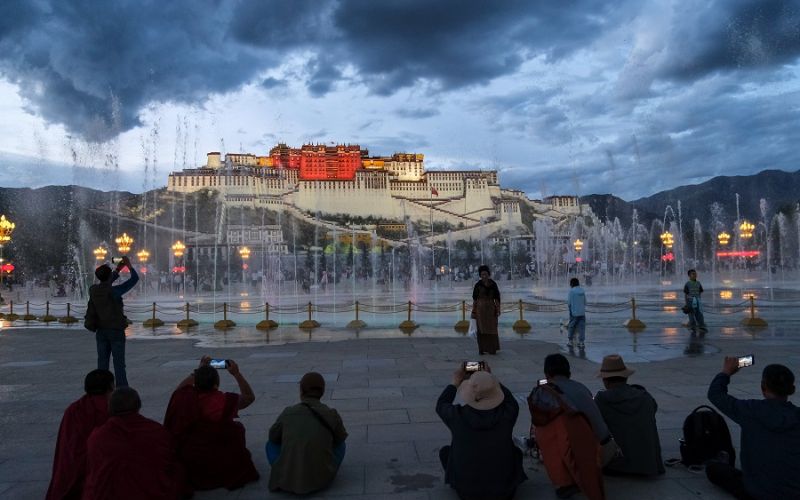
The Chinese government has announced a comprehensive winter tourism promotion strategy that includes free access to iconic tourist destinations like the Potala Palace in Lhasa. This move has raised questions about China's motivations and its impact on the region.
The regional tourism development department unveiled this initiative, which will be in effect from November until March 15 of 2024. During this period, all scenic spots rated above A level in Tibet will be open to the public free of charge, with the exception of temple sites. The decision to open up access to the Potala Palace, an architectural wonder and a UNESCO World Heritage Site, is of particular significance.
However, behind the scenes of this tourism promotion lies a more complex narrative. Rights organization Free Tibet highlights that the Chinese government has recognized the financial value of Tibetan culture and is marketing a romanticized version of Tibet to its domestic tourist market. In this portrayal, Tibetans themselves have little influence on how their country is depicted and gain limited financial benefits from the flourishing tourism industry.
“Tourism to Tibet helps to legitimize China’s rule and attempts to cover up the harsh reality of six decades of political and cultural repression. What’s more, tourism risks becoming insensitive voyeurism when local Tibetans are treated as an exotic curiosity and centuries-old customs are reduced to Disneyland-style attractions”, cited Free Tibet.
Tibet, under Chinese occupation, is depicted through a lens that offers little input from Tibetans themselves, leaving them with minimal financial benefits from the booming tourism industry. The government's promotion of Tibetan culture serves to legitimize China's rule and divert attention from the harsh realities of six decades of political and cultural repression.
Chinese tourists now number in the millions in Tibet, and the number of tourists to the Tibetan Autonomous Region (TAR) surpasses its official population. In stark contrast, Tibetans face numerous travel restrictions, with police checkpoints monitoring movement and permits required to visit sensitive religious areas, including the capital city of Lhasa. The limited access to Chinese passports makes international travel difficult, if not impossible, for many Tibetans.
China has invested heavily in infrastructure projects in Tibet, including high-speed railways and airports, aimed at facilitating tourism. However, these projects risk undermining the sanctity of sacred Buddhist sites and marginalizing Tibetan pilgrims.
It is important to note that these development initiatives are not solely about improving tourism; they serve a clear political motive. Senior Chinese Communist Party officials have emphasized the importance of these projects in maintaining regional stability and strengthening national defense.
According to the report, Tibetans continue to face economic marginalization. For instance, a mine disaster in Meldro Gungkar County in 2013 highlighted the lack of Tibetan involvement in Chinese-led projects. International hotel chains operating in Tibet, such as Intercontinental, have also been criticized for employing a limited percentage of Tibetan staff.
China's propaganda portrays its invasion of Tibet as a liberation from serfdom, casting resistance to its rule as ingratitude. With restricted movement and communication, Tibetans struggle to spread alternative narratives. The version of Tibet marketed to Chinese tourists portrays a picturesque region but also paints Tibetans as primitive and of little value.
This 'Disneyfication' of culture has reduced historical places and local customs to mere entertainment for tourists. While Chinese tourism to Tibet could promote cultural exchange and understanding between cultures, the irresponsible marketing and propaganda have dehumanized Tibetans in the eyes of many Chinese tourists, discouraging them from taking Tibetan culture seriously.
Edited and collated by Team TRC